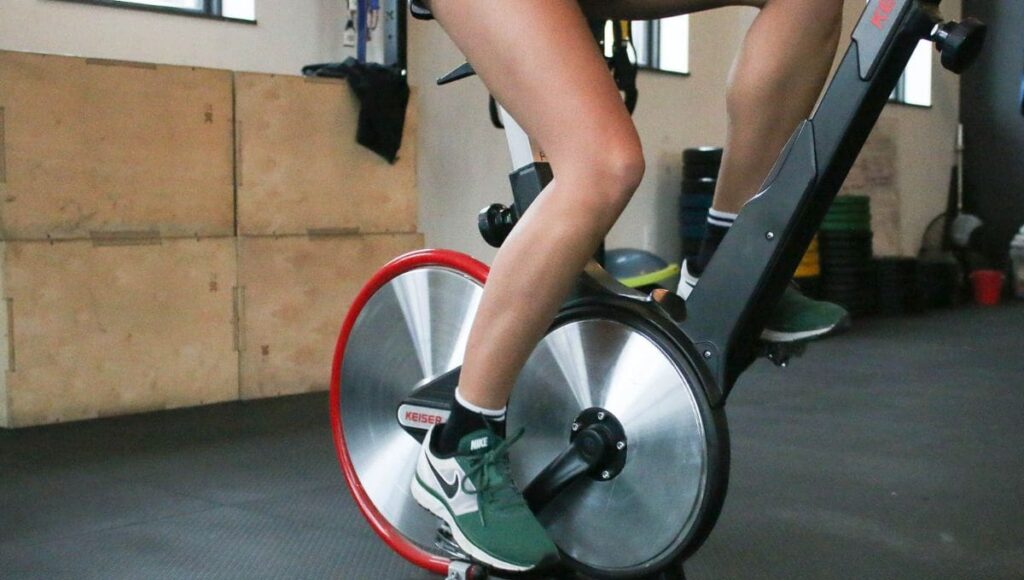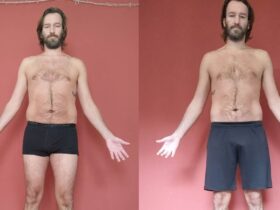Doing harder cardio will lead you to a leaner body. Surely. Right? That simple question, that many people take it as a common knowledge, is what we are going to dig deep into today and explain better what is true and what is false about that idea.
Cardio! This is the answer to your fitness problems. At least that is what some people believe. By doing cardio, you will definitely get thinner, increase your calorie expenditure and, thus, have a leaner look.
On the other side of the spectrum are those who simply detest cardio. Either because they find it boring, or simply because they believe it brings little to no benefit for their fitness goals. These people often train harder lifting weights, which in turn builds more muscle, increasing their metabolism. And yes, a higher metabolism means your body burns more calories by simply surviving.
As you can imagine, both sides of the debate have valid points. But, ultimately, harder cardio equals leaner body? That is what Mike Israetel answered in a video he shared.
Dr Mike Israetel, PhD in Sport Physiology and co-founder of Renaissance Periodization, is a well-respected professor in the bodybuilding community. He doesn’t only talk about workouts and fitness tips, he often dives deep into health and nutrition.
Check below what this sport specialist and bodybuilding coach explained regarding intense cardio and thinner-looking bodies.
Related: Should You Lift Heavy for Muscle Gains and Light for Fat Loss?
True or False? Harder Cardio Equals a Leaner Body
The belief that harder cardio leads to more significant fat loss is a common misconception in the fitness world. Many individuals assume that pushing their cardiovascular limits will result in a leaner physique. Below, we will examine this myth and explore the structure of the claim, shedding light on the science behind cardio and its impact on fat loss.
The Perceived Exertion Scale:
Cardiovascular activities can be graded on a scale of perceived exertion, ranging from easy activities like walking to intense high-intensity interval training (HIIT). The misconception arises from the idea that the harder the cardio feels, the more fat it will burn. This belief is based on the assumption that challenging workouts lead to better results. However, several factors challenge this perspective.
- The Duration and Caloric Burn: The primary way cardio burns fat is through the duration of the activity. The longer the cardio session, the more total calories and fat are burned. While high-intensity cardio can burn more calories per minute, it is often unsustainable for extended periods. The relationship between sustainability and effort is exponential, making harder cardio less feasible over time.
- Excess Post-Exercise Oxygen Consumption (EPOC): While high-intensity interval training may induce a significant afterburn effect known as EPOC, it doesn’t always compensate for the lower sustainability. EPOC, though substantial, doesn’t match the total calories burned during longer, less intense cardio sessions.
- Fuel Utilization: Lower-intensity cardio, such as incline walking, tends to use a higher percentage of fat for energy. While this might not be a decisive factor, it adds nuance to the idea that harder cardio always leads to more fat loss.
- Joint Wear and Tear: Harder cardio, especially when done frequently, can lead to joint pain and wear. Considering the long-term impact on joint health, it becomes crucial to find a balance between intensity and sustainability.
Research Explains How to Build Muscle Whilst Losing Fat

The Sustainable Approach:
If time constraints limit your cardio sessions, opting for harder cardio may be necessary to maximize calorie burn. However, for those with more flexibility, a mix of low-intensity, high-volume cardio, and occasional high-intensity sessions can be more beneficial. Sustainability becomes a key factor in achieving long-term success.
In conclusion, the myth that harder cardio inevitably leads to more significant fat loss has been debunked by examining the intricacies of cardiovascular exercise. While it’s true that higher-intensity workouts can burn more calories per minute, the sustainability factor plays a crucial role in achieving consistent and lasting results.
Understanding that the relationship between effort and sustainability is exponential helps individuals make informed decisions about their cardio routines. Opting for a sustainable approach, which includes a balance between low-intensity, high-volume cardio and occasional high-intensity sessions, proves to be more beneficial in the long run.
How to Get Shredded with the 5 Rules of Fat-Burning Cardio

The sustainable approach considers factors such as duration, intensity, and joint health, acknowledging that excessive wear and tear on the joints can have detrimental effects over time. By finding a balance that aligns with individual lifestyles and goals, individuals can achieve and maintain a lean physique without succumbing to the misconception that pushing harder is always the key to success.
Tips for Integration of “Cardio for Fat Loss” into Your Life:
- Consistency is Key: Choose activities you enjoy to make them sustainable. Consistency is more important than intensity, especially when adopting cardio practices into your lifestyle.
- Set Realistic Goals: Gradually increase the duration and intensity of your cardio sessions. Setting realistic goals ensures you stay motivated and avoid burnout.
- Mix It Up: Variety is essential to prevent boredom and keep your body challenged. Rotate between different cardio exercises to engage various muscle groups.
- Make It Social: Turn cardio into a social activity. Exercise with friends, join group classes, or participate in outdoor activities that involve movement.
- Track Your Progress: Use fitness apps or wearables to monitor your activity levels. Tracking progress can be motivating and help you adjust your cardio routine as needed.
Remember, the most effective cardio practice is the one that aligns with your preferences and fits seamlessly into your lifestyle.
Ultimately, fat loss is a multifaceted process that requires a holistic approach, including attention to diet, overall physical activity, and cardiovascular exercise. Embracing the idea that sustainable cardio, tailored to individual capabilities and constraints, is more effective than solely focusing on intensity allows for a more nuanced and realistic perspective on achieving fitness and health goals. So, rather than falling for the allure of the “no pain, no gain” mentality, individuals can navigate their fitness journeys with a well-informed and sustainable approach, redefining what it truly means to be in excellent shape.
If you want more detailed information from Mike Israetel himself, simply watch the video below.
5 Unique Cardio Exercises You’ve Never Tried
How to Use Fasted Cardio for Fat Loss
Embarking on a weight loss journey involves various approaches, but the key lies in a holistic strategy, from minor lifestyle adjustments to permanent dietary changes. Several key strategies can aid in achieving weight loss goals:
- Create a Calorie Deficit: Weight loss necessitates consuming fewer calories than the body expends daily. To accomplish this, individuals can adopt a balanced, low-calorie diet while increasing their physical activity levels.
- Embrace a Healthy Diet: Prioritize whole, unprocessed foods such as fruits, vegetables, lean proteins, and whole grains. Conversely, avoid high-sugar, high-fat, and processed foods, as they can hinder weight loss efforts.
- Regular Exercise: Engaging in frequent exercise boosts calorie expenditure, aiding in weight loss and fat reduction. The more active one is, the more calories they burn, accelerating the weight loss process.
- Adequate Sleep: Sufficient sleep is crucial, as inadequate rest can disrupt hormone levels that regulate appetite and metabolism, potentially leading to weight gain. Aim for 7-8 hours of quality sleep per night.
- Stress Management: Stress can trigger overeating and contribute to weight gain. Adopt stress-reducing practices such as meditation, yoga, or deep breathing to support weight loss efforts.
Source link: https://www.boxrox.com/true-or-false-harder-cardio-equals-a-leaner-body/ by Robert Born at www.boxrox.com






